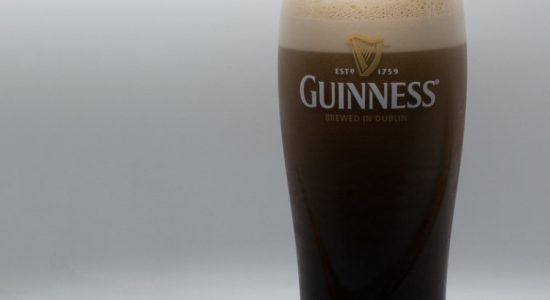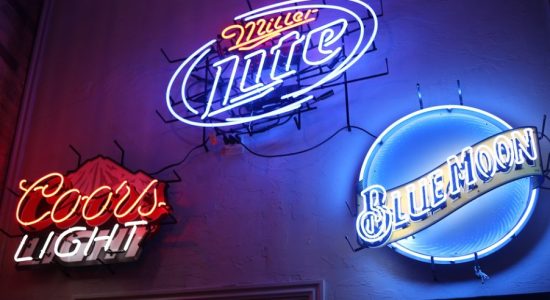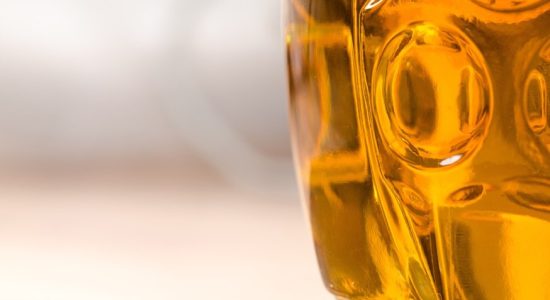What is Lager Beer? And how is Lager Beer Made?

Lagers are everywhere. This style of beer is probably the most common beer in the world and i would bet if i could, that a lager is the first beer you’ve ever tried. This blog post will take you through the world of lagers.
What is Lager? Lager is a type of beer conditioned at low temperatures. Lagers can range from pale to dark in color. Pale lager is the most widely consumed and commercially available style of beer with many brands that’s known worldwide.
If you want to learn more about lager beer and how the lager beer is made, please keep on reading as i will take you through everything you’ll need to know!
What Is a Lager?
If you ask any beer enthuthiast, he would say that the primary definition of a lager is that it is bottom-fermented. This means that the yeasts used to ferment the beer flocculate at the bottom of the fermentation tank. Ales are actually quite the opposite, since they use yeast that are top-fermenting.
Lager yeasts can tolerate much lower temperatures than yeasts used for ales. Typically between 45-55 Fahrenheit/7°C-13°C, these lower temperatures reduce the number of by-products during the fermentation and therefore produce a much cleaner, crisper beer.
The more tolerant lagers can handle longer aging times than ales. This technique is called lagering, and these beer can be aged for months at much lower temperatures.
Lagers are relatively young
Brewing beer and spirits have been a human practice in almost every culture over the last 4.000 years. Hops were introduced to the beer brewing process in 1000 A.D. and until 16th-century almost every beer that was brewed was an ale.
Lagers were discovered in the 15th-century by accident. The beer was brewed with cold-resistant yeast, and then stored in months in cool caverns. The long fermentation makes the beer crisp and refreshing.
Even the historical lager-brewing region of Bavaria, the famous german lager wasn’t made before the 19th-century. Same goes for the Czech Pilsner.
Characteristics
Despite being one of the largest groups in beer, the difference between lager is still much less than between ales.
Not all lager follow the characteristic pale, transparent color and flavor of the pilsner. Bocks have an awesome barley flavor and can range from amber to dark brown in color, and dunkelbiers are known for their more malty heavy flavors.
However, there are still a few characteristics that can generalize this category of beers:
- Lagers tend to have a light, crisp taste.
- Lagers usually have more carbonation than ales.
- The flavor profile of lager is more smooth and well-balanced.
- Lagers are usually less bitter than ale, with lower IBU – International Bitterness Units
When serving a lager
It is generally recommended that lagers is to be served cold. Though most lagers are best nice and cold, some of the lagers are best served closer to room temperatures. The doppelbock and Eisbock are two of those beers that are best served at room temperature.
Keep in mind though, that as with any beverage, you should always go with your personal preference. You can of course try recommendations, but if you don’t fancy the recommended, just stick with what works with you.
What is the difference between ale and lager
Next order of business is finding out the differences between an ale and a lager beer. The experienced beer-enthusiast will probably know the difference, both regarding the taste, colour and brewing method.
Of Course, not everyone knows all of these things. In fact, most people probably dont know. Therefore, we will list the differences between ale and lager, in case you dont know them.
What is the difference between ale and lager? There is multiple differences between ale and lager. The biggest and most obvious difference is yeast. Ale and lager beer is brewed with different strains of yeast. They are also brewed at different temperatures, as well as the taste and colour differentiates from each other.
Obviously, this was the shortest possible version of the differences between ale and lager. There is ofcourse a lot more to it than just this, which we will try to elaborate now.
Here is an overview over the most essential differences between ale and lager.
| Lager Beer | Ale Beer |
|
|
Different types of lager
Now that we have established what a lager is, how it’s brewed and what the difference between a lager and an ale is, which means that it’s now time to dig in to to world of lagers. More specific, the different types of lagers.
First of all, there is five different types of lagers, if you only count the “main-categories”. The five primary categories within lager is:
- Pale Lagers
- Amber Lagers
- Dark Lagers
- Bock
- Specialty Lager
Within these primary categories, there is a lot more types of lager beers. Here is the different types of lager-beers, you might stumble upon:
- American Pale Lagers
- American Dark Lagers
- Rock Beer
- Doppelbock
- Dortmunder Export
- Eisbock
- Helles Bock
- Maibock
- Oktoberfest Beer
- Munich Dunkel
- Munich Helles
- Pilsner
- Schwarbier
- Vienna Lager
What brands of beer are lagers?
There is hundreds, thousands if you count micro-breweries, of different breweries who produces lagers. Therefore, we have chosen to list the most famous and popular lagers in the world.
- Stella Artois
- Peroni Nastro Azzurro
- San Miguel
- Budweiser
- Carlsberg Lager
- Heineken Premium
- Corona
- Kronenbourg 1664
- Foster’s
- Carling
- Estrella Damm
- Coors Light
- Birra Moretti
- Budweiser 4.3
- Amstel
- Budweiser Budvar Original
Do you find these beers a little too generic? Many enthusiasts will. To those of you who wants other alternatives, we have searched and drinked through the market and found 15 great lagers, you might not know.
15 tasteful lagers you might not know
- Schlafly Summer Lager
- Negra Modelo
- Bluejacket
- Troegs Sunshine Pils
- Cigar City Lager
- Firestone Lager
- Victory Hellas Lager
- Polestar Pilsner
- Full Sail Pilsner
- Creemore Springs
- Zero Gravity Green State Lager
- Samuel Adams Noble Pils
- Epic Brewing Los Locos
- Pastrami Pilsner
- Big Choice Pinhead Pilsner
We have personally tried all of these Lagers, which was not easy, and we simply loved them all. Each and every one of them deserves a taste. At least once.
6 Key points to good lager
Now we are at a point, where you have learned ALOT about what a lager beer is. All this information might make you wanna brew your very own lager. But how? What is the key to making a fantastic lager beer? We’ll tell you!
We made a list of the 6 key points that is most essential when brewing a lager. Enjoy, and good luck with your brewing.
1. Patience
Lager is german, and essentially means to “store” something. Funny enough, this is exactly what you need to do. The first types of lager was the outcome of long-termed storage in cellars beneath the ground.
Essentially, the fermentation of af lager and ale i very much alike, just not when it comes to the time-frame. Lagers takes alot longer time, which is a result of the lower temperatures in the cellars.
So, if you’re in doubt about whatever the beer is ready or not, you should always give it more. A little too much is better than too little.
2. Control the temperature
As you probably know, all kinds of yeast gives optimal fermentation results under certain ranges of temperatures. Therefore, it is very important to remain within the optimal temperature range of the yeast you are using.
Determine the optimal range of temperature, based on the yest, and make sure you stay within it. But how? First of all, you should keep your brewing in a basement, garage or something similar. Not only because of the lower temperatures, but also because the temperature is much easier to control.
Temperatures shift very swiftly in the air, which can be hard to control. Make sure to keep the brewing away from windows, doors etc.
3. Use the right yeast
Now more than ever, high-quality yeast is available for amatourbrewers all over the world. If you really want to brew an authentic and delicious lager, you should make sure to use liquid yeast strain.
This might very well be more expensive, but our experience tells us that it’s worth every penny.
4. Irish moss
It’s a very good idea to add a fining agent, such as Irish moss. This makes the protein precipitate, maintaining a hard, rolling boiling all the way. A lot of the proteins can be prevented from creating it into the fermenter, which also creates a more clear and clean product.
5. Remember the yeast starter
Is you want to brew a real and authentic lager, it is very important to make a yeast starter. Mind the metabolism of the yeast that slows down when the temperature drops.
The low temperatures when brewing a lager delays the onset of growth, which can result in a too long lag phase, that might make bacteria to reproduce and contaminate the lager.
Luckily, you can avoid this if you pitch some more yeast. You can try with to or three times the cell volume you would use in an ale fermentation.
6. Chill with wort
It is very important to quickly lower the temperature of the wort as close to the fermentation temperature as possible. If you fail to do this, you might get a very stand and premature initial fermentation. Therefore, it is a very good idea to use a wort chiller.
Mexican Lager recipe
If you want to try a different and fresh lager, you should without doubt try this mexican lager recipe. The outcome will make about 5 gallons, which should be more than enough for a funny mexican night
Malt
- 3.4 lb Great Western 2-row malt
- 2 lb Great Western 6-row malt
- 3.3 lb Flaked Corn
Hops
- 0.5 oz Liberty hops: 60 min.
- 0.5 oz Liberty hops: At whirlpool
Yeast
- White Labs WLP940, Mexican Lager Yeast
How to:
- Ferment at 51-53 degrees F for 7 days
- Let fermentation warm to 62-64 degrees F for 4-6 days for diacetyl rest
- Chill 5 degrees F a day until you reach desired lagering temperature
- Fine with gelatin or isinglass to clarify, carbonate to 2.8 to 3.0.
- Serve at 38 degrees F with a lime.
Dark Ginger Lager Recipe
Is you want a more dark and fruity lager, you should try this dark ginger lager recipe. The outcome of this will also give you 5 gallons of lager.
Malts
- 5.75 lb. light malt extract syrup OR 4.75 lb. (2.2 kg) light dry malt extract
- 1 lb. crystal malt (10° L)
- 6 oz. chocolate malt
- 6 oz. Belgian Special B malt
Hops
- 2 oz. German Hallertauer hops, 4% a.a. @ 60 min
- 1 oz. Mt. Hood or Santiam hops @ 1 min
Yeast
- German- or Bavarian-type lager yeast
Others
- 8 oz. freshly grated ginger @ 10 min
- 0.25 oz. freshly crushed coriander seed @ 10 min
- 1/4 tsp powdered Irish moss @ 10 min
- 3/4 cup corn sugar for priming bottles or 1/3 cup (80 mL) corn sugar for kegging
How to
- Place crushed grains in 2 gallons of 68 degree water
- Steep for 30 minutes
- Strain out
- Rinse with 3 quarts hot water
- Discard the crushed grains
- Add malt extract & 60 minute hops
- Boil
The general cooking time is 60 minutes. When 10 minutes remain, add the Irish mash, grated ginger and crushed coriander seeds. When there is 1 minute left, add the hops in 1 minute.
After a total 60 minutes of herbal cooking, turn off the heat and then immerse the covered herb jar in a cold water bath and let sit for 15-30 minutes or the time it takes to have a few home brews.
Strain and sprinkle humbly and direct the hot herb into a disinfected fermentation, functional 2.5 gallon (9.5 L) cold water added. If necessary, add additional cold water at achieve and batch size of 5.5 gallons. Air the wort very well.
Pour the yeast when the temperature of the herb is approx. 70 ° F (21 ° C). Once visible signs of fermentation are evident, ferment at temperatures of approx. 12.5 ° C for approx. a week, or until fermentation shows signs of rest and stop.
Rack from primary to secondary. If you have the capacity, you should the beer at temperatures between 1.5 and 7 ° C for 3 to 6 weeks.






